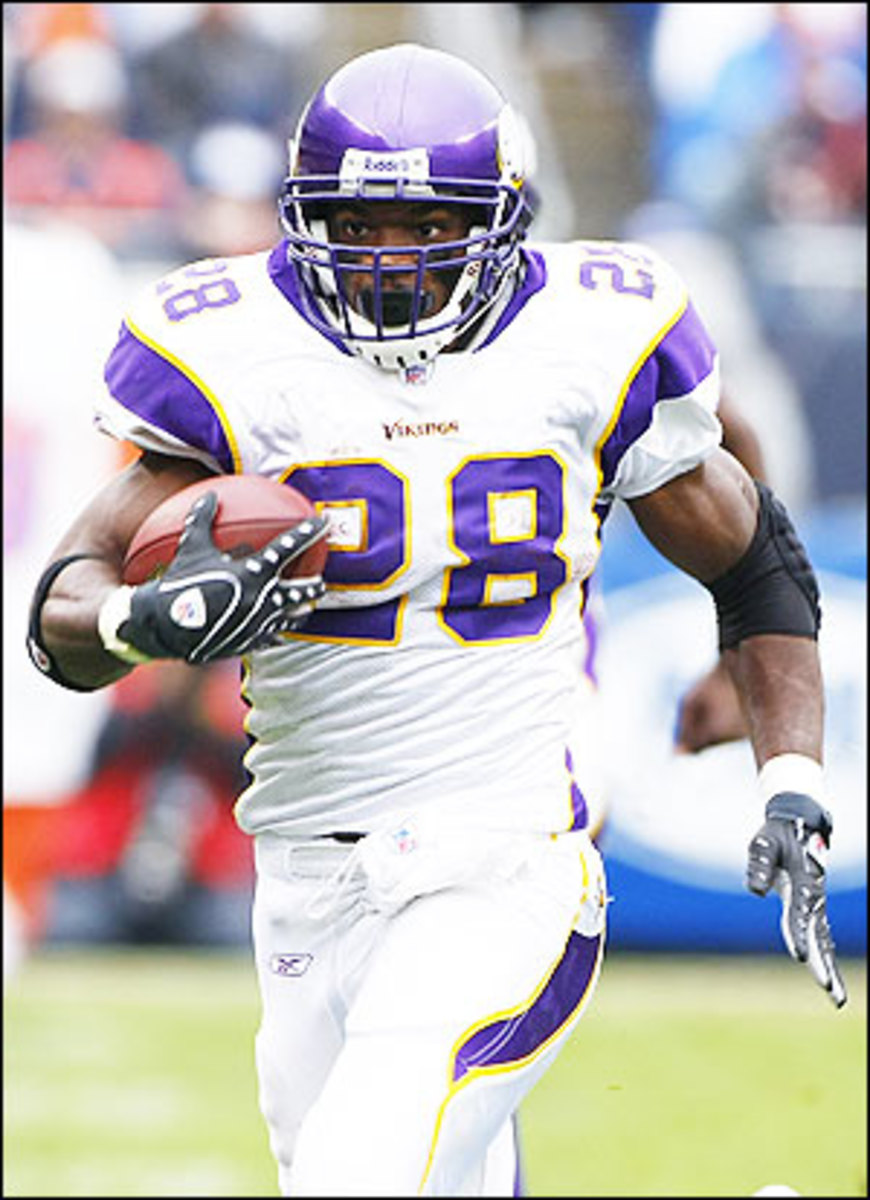No rush to use Peterson


A few years ago, back when he was offensive coordinator with the Eagles, Brad Childress had a talented young tailback named Brian Westbrook. He was fast, explosive and productive, and the temptation was there to give him the ball down after down, series after series.
Childress resisted. Westbrook's 5-foot-8, 215-pound frame wasn't ready for the workload, and despite pressure from fans and media, the Eagles brought Westbrook along slowly. Today, he's one of the most productive backs in football.
Fast forward a few years. Childress is now head coach of the Vikings. Once again, he has an explosive young tailback, Adrian Peterson, and once again he's resisting the temptation to over-use him.
We've all seen promising young backs collapse under the weight of too much too soon. The Bucs gave Cadillac Williams 88 carries in his first three NFL games, and he produced 145 yards and a 4.9 average to open the 2005 season. He hasn't been the same since and is out for the rest of this season with a career-threatening knee injury.
Barry Foster, Dorsey Levens, Jamal Lewis, Natrone Means, James Wilder -- the NFL record book is full of backs who had one, maybe two, huge seasons early in the their career but never recovered from the pounding of 350 to 400 carries.
Which brings us to Peterson.
He certainly looks like a budding superstar. He's big, strong, fast, explosive, has great vision -- he looked like Jim Brown galloping down the field Sunday against the Bears. In fact, Peterson became the first NFL player since Brown 44 years ago to rush for 224 or more yards on 20 or fewer carries.
So here's Childress. He went 6-10 last season in his first year as the Vikings' head coach and went into Sunday's home game against the Bears with a 1-3 record. Pressure was mounting for him to start winning games or else suffer the same fate as Mike Tice, Dennis Green, Jerry Burns and everybody else who's tried to coach the Vikings to their first Super Bowl since the mid-1970s.
The lure of a talent like Peterson must be powerful, especially for a head coach desperate to win. It's easy to think short term and keep feeding him the ball. Squeeze every carry you can out of him, risk his career to advance your own.
But Childress has steadfastly refused to overdo it with the rookie from Oklahoma. Peterson is averaging a respectable but not crippling 19 carries per game. Chester Taylor remains the starter and actually had more carries against the Bears (22) than Peterson (20).
"If it's at the end of a long run or if it's the end of a kickoff return, even though we might like to have him the next play, you still want to keep those guys fresh," Childress said. "That's where the fresh legs and the fresh looks give you a chance to have those explosions."
Here's what those explosions have led to for Peterson:
Despite ranking just 14th in attempts and starting two games, he leads the NFL in rushing.
With 121 rushing yards per game, he is 20 yards per game ahead of anybody else in football.
Peterson's 224 yards Sunday were the fifth-most ever in a game by a rookie.
One of the four guys with more was Broncos running back Mike Anderson, who ran for 251 yards against the Saints late in 2000 -- an NFL rookie record. Anderson also needed an insane 37 carries to get those 251 yards. A week later, he carried 29 times against the Seahawks, and he finished the regular season with 1,500 yards. By the time the Broncos reached the playoffs, Anderson was fried. He managed just 40 yards on 15 carries in a wild-card loss to the Ravens. Since then? From 2001 through 2006, Anderson averaged a pedestrian 503 yards per year.
Peterson is lucky to have a coach who's confident enough in his own long-term program to avoid getting his 22-year-old star beat up for an immediate payoff. If the cost of protecting the franchise is an extra loss here and there, it's worth it. Childress knows that in the end, it will pay off.
• Peterson's 224 yards are third-most in NFL history on 20 or fewer carries. Bobby Mitchell of the Browns was 14-for-232 against the Redskins on Nov. 15, 1959, and Brown was 20-for-232 against the Cowboys on Sept. 22, 1963. Peterson is the first back with 200 or more yards and three or more rushing TDs on 20 or fewer carries since Mitchell 48 years ago.
• When Chad Pennington's first pass against the Eagles went incomplete, Kurt Warner of the Cards became the most accurate passer in NFL history. That incomplete pass dropped Pennington's career completion percentage from 65.504 percent to 65.467. That made Warner's 65.503 mark the best in NFL history. Warner was 2-for-2 against the Panthers before getting hurt. He's currently the record holder at 65.529.
• The Browns have allowed 17 passing touchdowns in six games, which puts them on pace to give up an NFL-record 45 this year. The AFL Broncos allowed 40 touchdowns in 1963, a mark that became an NFL record upon the merger. The most TDs allowed by a pure NFL team is 38 by the 1969 Cards.
• On Sunday, Brian Griese became only the fourth quarterback in Bears history with 381 or more passing yards and three touchdowns in the same game. On Nov. 14, 1943, Sid Luckman threw for 443 yards and seven TD passes against the Giants in a 56-7 win at the Polo Grounds; on Dec. 1, 1949, Johnny Lujack passed for 468 yards and threw six TDs in a 52-21 win over the Chicago Cards at Wrigley Field; and on Nov. 14, 1999, Jim Miller had 422 yards and three TDs in an overtime loss to the Vikings at Soldier Field.
